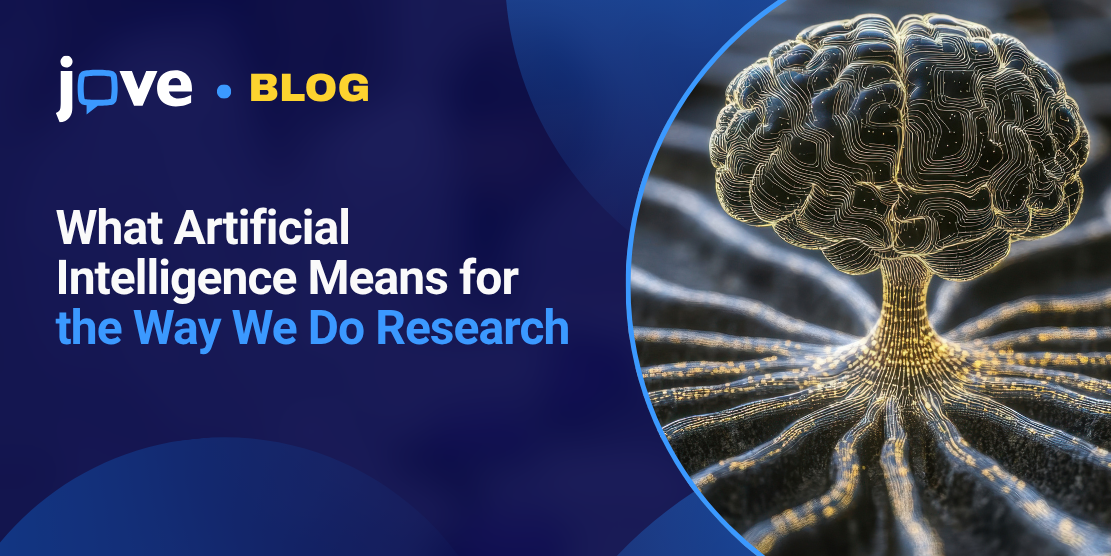Could you tell if this article was written by AI?
Artificial intelligence has moved from the background of technology into the center of daily experience. It recommends the shows we watch, guides the routes we travel, translates the texts we send, and filters the information we see online. In a short time, AI has shifted from a hidden layer of technology to something we actively notice and interact with every day.
That same shift is now reshaping how data is generated and understood in science.
Research today produces more data than ever before, and AI offers powerful ways to make sense of it all. It reveals patterns, predicts outcomes, and accelerates discovery. But speed and scale alone do not guarantee reliability. To draw meaningful scientific conclusions, researchers need to trust the quality of the data behind AI outputs. That trust depends on transparency and reproducibility: knowing not just what the results are, but how they were produced.
Exploring Data Without a Map
“Data-driven discovery” (DDD) describes a mode of research in which scientists mine large datasets to identify unexpected patterns, relationships, or anomalies. Unlike traditional hypothesis-driven approaches, DDD begins not with a question but with exploration.
It has already made advances in areas like medicine and environmental science. For example, researchers have used it to identify existing drugs that may treat new diseases, and to track long-term climate trends and predict future activity.
Artificial intelligence makes DDD faster and more powerful. Machine learning algorithms, for example, can sift through complex experimental outputs, flag correlations invisible to the human eye, and even predict likely outcomes. In areas such as cancer biology, climate modeling, and materials science, AI tools are already accelerating discovery.1-3
Yet AI is not magic. Its ability to reveal new insights depends directly on the quality of the data it learns from. Low-quality, inconsistent, or poorly documented data can lead to misleading results.4 In short: data-driven discovery only works if the data can be replicated.
The Foundations That Give AI Meaning in Research
◽Reproducibility and transparency
For AI insights to be meaningful, they must be built on reliable data. That reliability comes from clear, well-documented methods that others can repeat. When protocols are ambiguous, data may lose value no matter how advanced the analysis. Researchers increasingly turn to detailed resources, like visual demonstrations, to ensure results can be trusted and applied with confidence. Visual methodology resources provide step-by-step transparency, showing details that text alone may miss—from how reagents are handled to how instruments are calibrated.
◽Productivity and efficiency
Time is a scarce resource in research. Methods that are easy to learn and standardize help teams avoid delays and bring new members up to speed faster. When training and troubleshooting require less effort, researchers can dedicate more energy to experiment design, analysis, and model building.
◽Interdisciplinarity
Major scientific challenges, from renewable energy to neuroscience, cross many fields. Yet no researcher can master every method. Access to diverse and well-explained protocols helps close this gap, giving computational scientists a clearer view of experimental data and experimentalists a stronger grasp of analytical tools.
As Megan Leftwich, Assistant Professor of Mechanical and Aerospace Engineering at George Washington University, noted: “I love JoVE videos. They help interdisciplinary researchers like me to understand specificities of research techniques which are outside one’s comfort zone or area of specialization.” Such cross-pollination ensures that AI models are trained and interpreted with a richer understanding of the underlying science.
Putting AI to Work at JoVE
For comprehension and discovery
AI is beginning to support researchers not just in analysis but in how they approach and understand knowledge itself. JoVE Visualize illustrates how AI can support reproducibility at scale. By mapping tens of millions of peer-reviewed papers to tens of thousands of methodology videos, the platform allows researchers to move from abstract findings to concrete practices. Instead of treating results in isolation, they can see the experimental methods that produced them. This makes it easier to assess reliability, trace data back to its source, and build stronger foundations for discovery.
For navigation and context
Intelligent tools can also help researchers consume knowledge more efficiently. JoVE Co-Pilot, which is currently rolling out, acts as a guide to JoVE’s peer-reviewed video articles. The tool offers concise summaries, protocol-level Q&A for troubleshooting, and related content suggestions.
Taken together, these innovations highlight how AI can ease access to complex knowledge and strengthen the way researchers work with it.
Key Takeaways
AI offers extraordinary promise for scientific discovery, but its outputs are only as strong as the data on which they are built. Reliable, transparent, and reproducible methods remain the foundation of trust. By pairing advanced computational tools with careful experimental practices, researchers can ensure that data-driven discovery is not just fast, but also meaningful and credible.
While these technologies can accelerate the pace of science, they cannot replace the creativity, judgment, and innovation that come from researchers themselves. The most powerful discoveries will continue to arise where human insight meets computational power, guided by methods that keep science clear and reliable.
Disclaimer: This post was written by a human.
Stay ahead of the curve and increase your lab’s productivity with JoVE.
- Shrestha, P., & Mahmood, A. (2019). Review of deep learning algorithms and architectures. IEEE Access, 7, 53040–53065. https://doi.org/10.1109/ACCESS.2019.2912200
- Marcus, G. (2020). The next decade in AI: Four steps towards robust artificial intelligence. Journal of Artificial Intelligence Research, 69, 1–12. https://doi.org/10.1613/jair.1.12227
- Nematov, D., & Hojamberdiev, M. (2025). Machine learning-driven materials discovery: Unlocking next-generation functional materials — A minireview. arXiv preprint arXiv:2503.18975. https://arxiv.org/abs/2503.18975
- Kreuzberger, D., Kühl, N., & Hirschl, S. (2022). Machine learning operations (MLOps): Overview, definition, and architecture. arXiv preprint arXiv:2205.02302. https://arxiv.org/abs/2205.02302



.gif?width=800&height=432&name=chrome-capture-2025-10-02%20(1).gif)
.gif?width=800&height=431&name=chrome-capture-2025-10-02%20(2).gif)
